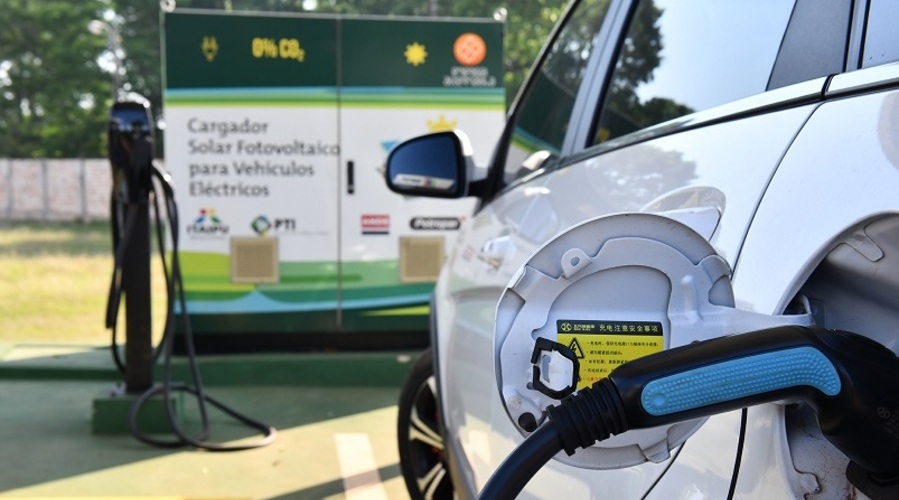Paraguay has taken a significant step toward consolidating electric mobility: in just five months, it increased its charging infrastructure by 25%.
According to the Chamber of Vehicle and Machinery Distributors (CADAM), the country had 80 charging centers in September 2024, a figure that rose to nearly 100 by February 2025.
This growth comes in a context of sustained increase in the electrified vehicle fleet, with a notable presence of both fully electric vehicles and plug-in hybrids. Recent data shows that Paraguay has already surpassed 1,260 imported units since 2016, and projections indicate that 8% of the automotive fleet could be electric by the end of 2024.
The expansion of charging points not only responds to growing demand but also to a national electrification strategy that combines efforts from the private sector, state entities, and multilateral organizations.
More chargers, more users
Among the key initiatives is the deployment of chargers at Petropar stations, the “Ruta Verde Paraguay” app developed by the Itaipú Technology Park (PTI-PY), and the entry of private companies such as Evergo, which has announced the installation of 500 smart chargers in the country.
In addition, the National Electricity Administration (ANDE) confirmed the installation of 30 ultra-fast chargers with power capacities ranging from 150 kW to 300 kW, to be deployed across strategic corridors of the country.
“This advancement in infrastructure is key to building user confidence and accelerating the adoption of clean technologies,” CADAM representatives highlight.
Distribution and types of chargers
Currently, between public and private stations, Paraguay already has 144 registered chargers, with a predominance of Type 2 (semi-fast use compatible with most electric models).
The stations are distributed across at least 15 cities, with the highest concentration in Asunción and its metropolitan area, where 23 of the active points are located.
In the eastern region, Ciudad del Este and Hernandarias are also beginning to consolidate as strategic nodes, partly due to their proximity to the Itaipú dam and their role as logistics hubs.
No law, but momentum continues
Despite the rapid growth, Paraguay still does not have a specific law regulating charging infrastructure. This lack of regulatory framework poses a challenge for the standardized and safe development of new installations.
Organizations such as CADAM and PTI-PY have urged Congress to speed up the approval of regulations that establish minimum conditions for operation, safety, and data management.
Nevertheless, the absence of a law has not stopped the sector’s momentum. Public-private partnerships and incentives for electric vehicle imports—exempt from tariffs—have created a favorable environment for new investments.
The legislative gap slowing down electromobility
Despite the progress made, the lack of a specific regulatory framework for the installation and operation of charging stations remains a significant barrier to the full development of electromobility in Paraguay. This regulatory gap creates uncertainty among investors and complicates long-term project planning.
As reported by Mobility Portal Latinoamérica, 13 years after the introduction of the first electric vehicle in the country, there is still no law governing charging infrastructure, delaying private investment in this sector.
The absence of regulations has led to delays in key projects. For example, the National Electricity Administration (ANDE) had announced the arrival of between 25 and 30 chargers of 150 kW for March 2024, intended for the first phase of the National Fast Charging Network. However, these units only arrived in September of the same year, highlighting the operational difficulties caused by unclear regulations.
Aware of this issue, various stakeholders have proposed solutions. In December 2023, during the closing of the Southern Cone Electric Route in Paraguay, the creation of the “Committee for the Study and Promotion of Public and Private Policies” related to electric mobility was announced.
This committee aims to generate and compile information to promote the development of electromobility in the country, including the drafting of legislative proposals.






